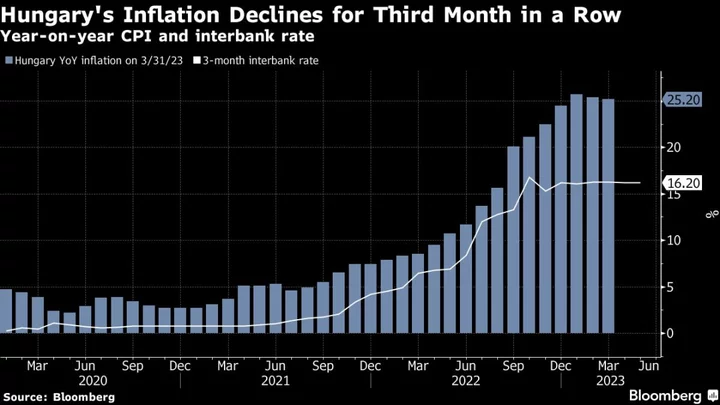Hungarian inflation, the European Union’s fastest, eased for a third month, bringing the central bank closer to cutting the bloc’s highest key interest rate.
The inflation rate dropped to 24.0% in April from 25.2% the previous month, lower than the median estimate of 24.1% in a Bloomberg survey. Month-on-month prices increased 0.7%.
Even as a deepening recession, a forint appreciation and lower energy costs have slowed inflation this year, price-growth still remained by far the EU’s fastest. Prime Minister Viktor Orban aims to reduce inflation to single digits by the end of December. There’s “a good chance” to do this as disinflation is expected to accelerate in the middle of this year, Deputy Governor Barnabas Virag said on Tuesday.
Officials will assess “in the coming months” the “persistence” of risk improvement as they deliberate on when to cut their EU-high 18% key interest rate, Virag said. Investors have largely been split about whether rate cuts may start in May or June.
Virag has said that the key rate, part of an emergency regime introduced in October to stabilize the country’s currency, may converge with the 13% base rate at some point in the autumn. If risks recede, the level of the base interest rate is sufficient to rein in inflation, according to the central bank.
The government has introduced compulsory price reductions at supermarkets, along with caps on the cost of basic food items, to act against a growing cost-of-living crisis. The central bank has criticized some of these measures on the grounds that they interfere with free markets, in the end exacerbating inflation.
Food prices were unchanged on the month in April but surged almost an annual 38% in April while household energy costs increased almost 42%, according to the data published Wednesday by the statistics office.

